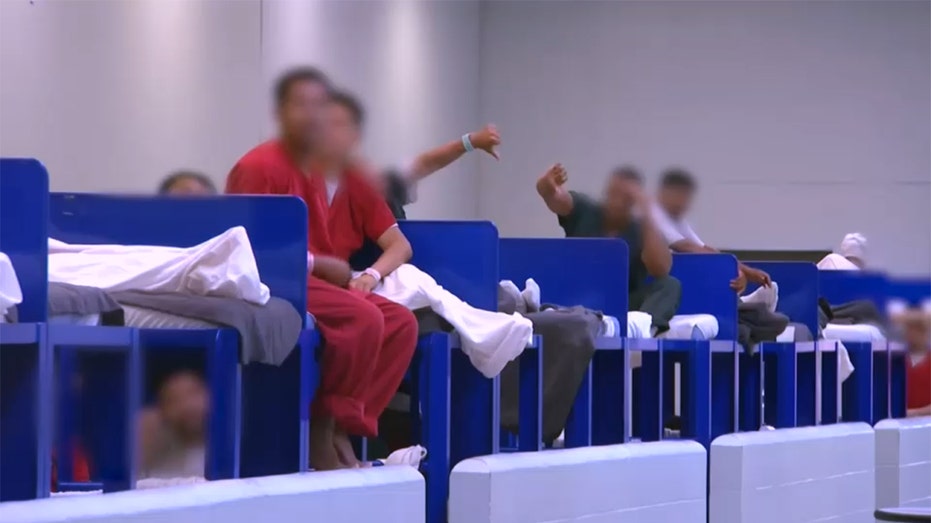Inside Texas ICE Detention: What Really Happens at the Montgomery Processing Center

Sarah Johnson
April 22, 2025
Brief
Inside Montgomery Processing Center in Texas, ICE processes hundreds of migrants weekly, highlights detainee conditions, legal access, healthcare, and ongoing debates over immigration detention practices.
Behind the heavily-guarded doors of the Montgomery Processing Center in Conroe, Texas, ICE handles the intake and processing of approximately 400 to 500 migrants each week. This facility, one of 134 across the country, is a major hub in the nation’s immigration enforcement network, with a current population of 1,240 detainees out of a possible 1,300.
According to ICE, nearly 48,000 individuals are in custody nationwide, with more than half charged or convicted of at least one criminal offense. As political promises of ramped-up deportations circulate, especially with former President Donald Trump in the spotlight, the scrutiny on these centers is intense. Concerns over detainee treatment and facility conditions aren’t exactly new, but officials here want to set the record straight.
"What we hope to accomplish, more than anything, is to dispel the false narratives out there," said facility manager Randy Tate. The Montgomery Processing Center boasts on-site medical care and even a full-blown courthouse with five federal immigration courtrooms—making it a one-stop shop for processing, legal proceedings, and healthcare, all under one roof.
Field Office Director Bret Bradford emphasized, "These facilities aren’t punitive; they’re strictly for removal purposes." The main goals: ensure that people appear for court and, when ordered, for deportation. With limited bed space, Bradford says the facility prioritizes cases based on flight risk and threats to public safety. Some cases, like terrorism or expedited removals, are mandatory detentions by law.
During the tour, the living conditions were on full display: dormitories packed with men and women in color-coded uniforms indicating risk levels, some reading on bunk beds, others flashing peace signs or thumbs down. "There are many false narratives and misinformation out there," Bradford noted, specifically highlighting access to legal and medical care.
"They have multiple avenues of access," he explained. Phones are available 24/7 in every dorm, and detainees receive a list of pro bono legal services upon arrival. There are tablets, law libraries, and even LexisNexis in the dorms. Attorneys can visit anytime, with private rooms set aside for confidential meetings. It sounds almost like a college campus—if you ignore the security, uniforms, and, well, the fact that no one can leave.
On the healthcare side, detainees are assessed and treated for medical issues—sometimes for problems they didn’t even know they had. The facility also features game rooms, gyms, a library, and a chapel, although not all ICE centers are quite so well-equipped.
ICE reports that 77% of those detained at Montgomery have been charged or convicted of a crime. Bradford stressed, "A lot of these folks are criminals. We don’t want them back in the community." He added that even those without criminal records are largely unknown quantities, as their backgrounds prior to entering the U.S. are often unclear.
ICE highlighted several cases to show the spectrum of individuals detained:
- Jose Luis Cisneros-Zamora, from Mexico, with convictions for aggravated robbery and a warrant in Mexico for sexual abuse of a minor.
- Valentin Hernandez Yanez, previously deported, convicted of aggravated sexual assault of a child and illegal reentry.
- Manuel Xol Coch, from Guatemala, with convictions for DWI and hit-and-run, previously deported and reentered illegally.
- Josue Ricardo Reyes Suchite, from Guatemala, convicted of intoxicated manslaughter in Texas.
- Elmer Oswaldo Lopez-Zecena, also from Guatemala, convicted of assault and indecent exposure to a minor.
- Jesus Vazquez-Daniel, from Mexico, wanted for aggravated homicide abroad and arrested in Texas.
Despite the official efforts to demonstrate transparency and comprehensive care, the debate around detention centers continues to fuel passionate arguments on all sides. Touring the Montgomery Processing Center is a reminder that the immigration story isn’t just about numbers or policies—it’s about real people, tough choices, and a system under the microscope.
Topics
Editor's Comments
So, the Montgomery Processing Center is basically the Swiss Army knife of ICE facilities—except instead of bottle openers and tiny scissors, it’s packed with courtrooms and law libraries. But let’s be real: even with all the amenities, it’s not exactly a destination you’d pick for spring break. I have to admit, the idea of detainees throwing up peace signs while ICE tries to showcase transparency is about as Texas as it gets—equal parts hospitality and high security.
Like this article? Share it with your friends!
If you find this article interesting, feel free to share it with your friends!
Thank you for your support! Sharing is the greatest encouragement for us.



